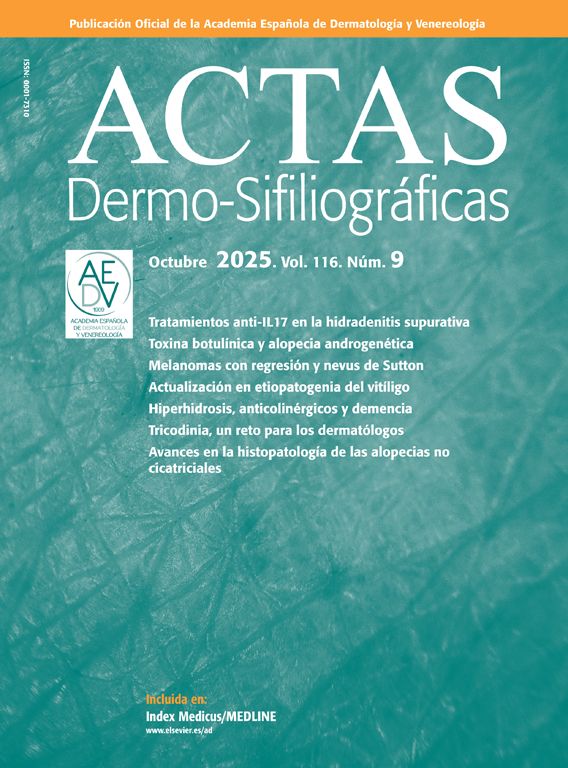Studies on the dermatological signs of transgender individuals due to gender-affirming hormonal therapy (GAHT) have increased in recent years.1,2
We have read with interest the article by Kuperman-Wilder et al.1 on skin signs in the trans population and congratulate the authors for creating a specific consultation and describing the most frequent dermatological consultation reasons in transgender individuals.
In Spain, there are few Dermatology services included in Gender Identity Units (UIG) or Support Units for Transgender People (UAT). In the province of Santa Cruz de Tenerife (Canary Islands, Spain) the Dermatology Service of Hospital Universitario de Canarias is the reference service for dermatological care for transgender individuals.
Although reference services exist, ideally, dermatological care for transgender individuals should be decentralized. All health care professionals, and especially dermatologists, should be trained in gender identity and in the specific management of the side effects of hormonal and/or surgical treatments.
Although acne is the most frequent reason for consultation in transgender men and women on GAHT in the series by Kuperman-Wilder et al. and in literature,2,3 we would like to add some recommendations that we follow in our UAT:
- •
Treatment and management with isotretinoin. In countries such as the United States, the prescription of isotretinoin in individuals with childbearing potential (cisgender women with a uterus and transgender men with a uterus) is subject to a pregnancy prevention program called iPLEDGE. This program mandates the use of hormonal contraceptives for isotretinoin prescription.3,4
Kuperman-Wilder et al. also recommend the use of hormonal contraceptives, prioritizing progestogen-only contraceptives in transgender men.1
In our UAT, we do not recommend hormonal contraceptive treatments to all transgender men or non-binary individuals with a uterus undergoing isotretinoin treatment for acne. In clinical practice, users are informed of the low, though still possible, risk of pregnancy even during testosterone therapy and in amenorrhea; their sexual orientation is inquired about (many transgender men are heterosexual and do not have penetrative sex), and finally, the importance of contraception is explained and emphasized in the case of penetrative penis-vagina sex.
Dermatologists must actively and respectfully ask and inform about all these aspects related to sexual life.
The systematic use of hormonal contraceptives should not be the norm in transgender individuals during isotretinoin treatment.
- •
Fertility preservation. The possibility of gamete preservation should be offered to all users starting GAHT.5 Dermatologists must ensure that users are aware of these rights before starting teratogenic treatments such as isotretinoin.6
It is essential to create a respectful space, to know diverse gender identities, pronouns, and anatomies, as the authors explain,1 but we do not agree that there are specific dermatoses in transgender users-patients.
It is essential to know the differences in presentation, management, and treatment of dermatoses due to GAHT to provide comprehensive and quality dermatological care. We need prospective patient series, clinical trials, and clinical management guidelines for these dermatoses, which are currently lacking in the literature.




